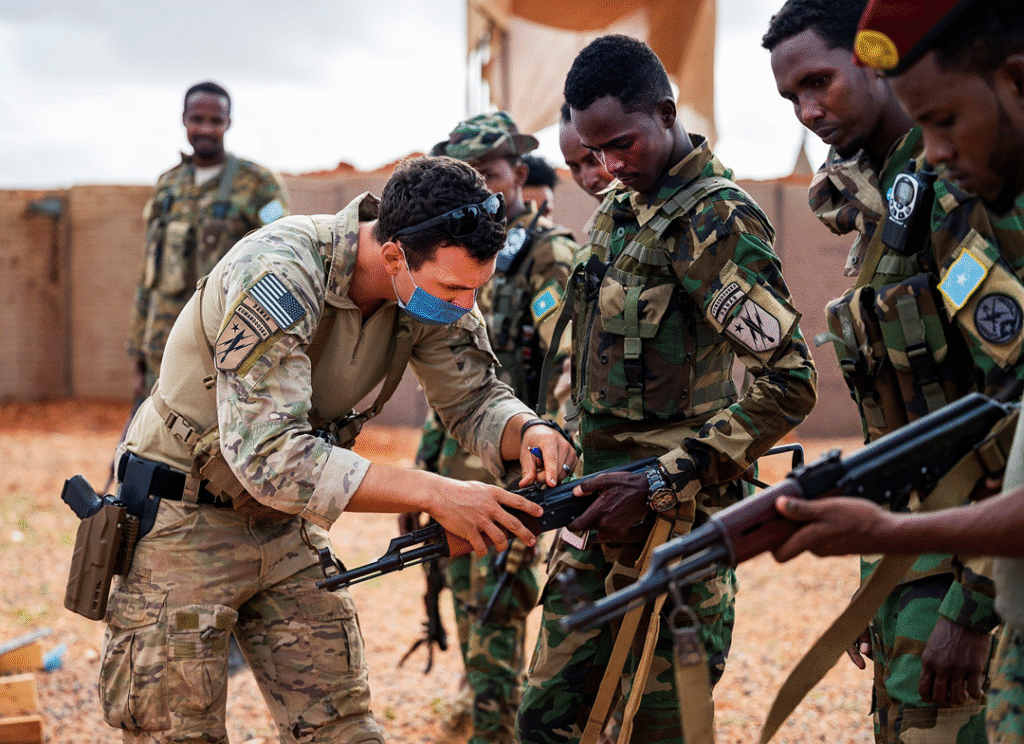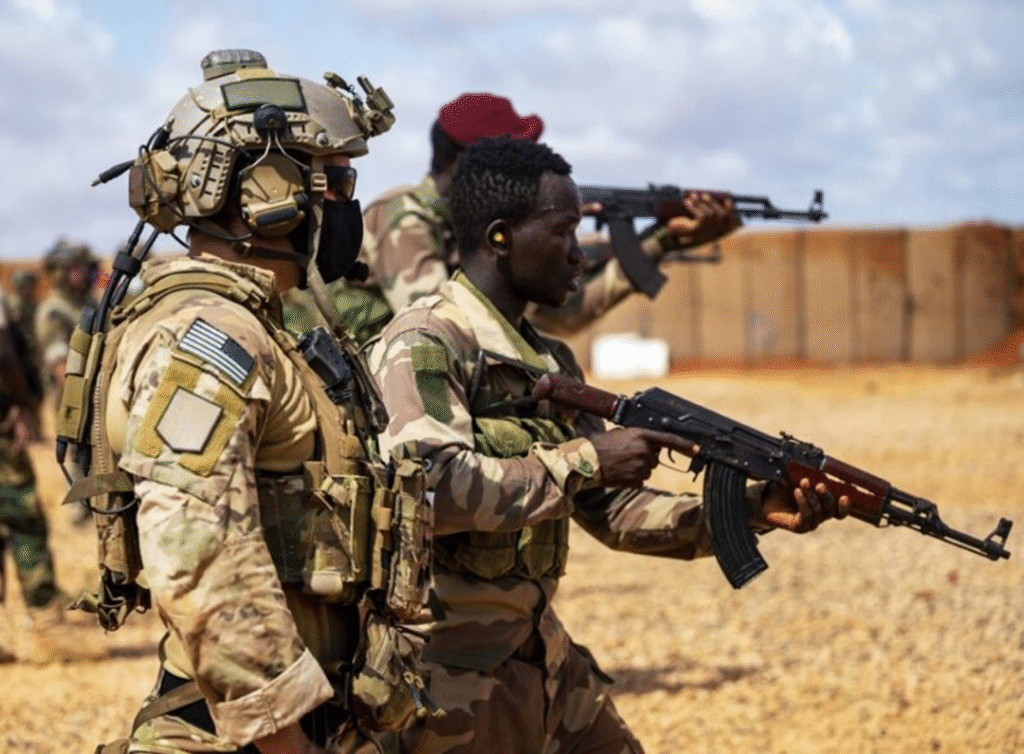Somalia has intensified its efforts to rebuild its national air force, with substantial assistance from the United States. These efforts are closely tied to the country’s broader security objectives and its role in African Union-led peacekeeping operations, particularly the African Union Transition Mission in Somalia (ATMIS), formerly AMISOM. Decades of civil conflict had all but dismantled Somalia’s air capabilities, leaving the country dependent on foreign air support. However, recent years have seen renewed commitment to restore a functioning air force capable of supporting internal security operations, humanitarian missions, and regional collaboration.

Strategic Shift
- Somalia’s federal government recognized that restoring its air capabilities was essential for supporting ground operations, enhancing surveillance, and reducing dependency on international forces. The deteriorating security situation in central and southern Somalia further underscored the need for effective aerial support for Somali National Army (SNA) and ATMIS operations.
U.S. Assistance and International Collaboration
The United States has played a central role in Somalia’s air force revitalization. Through various security assistance programs, including the Department of Defense’s Section 333 Train and Equip authority, U.S. support has included pilot training, technical instruction, airfield refurbishment, and limited equipment delivery.
American advisors have focused heavily on building foundational aviation skills. Somali personnel have received training in aircraft maintenance, air traffic control, flight safety, and logistical coordination. Several Somali pilots have also been enrolled in aviation training programs abroad, including in the United States and partner African countries, with the goal of developing a core of skilled, professional airmen.
Additionally, the U.S. supported the rehabilitation of key air bases, including Baledogle Airfield, which now serves as a joint-use facility for Somali and international forces. Baledogle’s transformation into a secure and functional base has significantly increased Somalia’s ability to support tactical and reconnaissance missions.
Aircraft Acquisition and Mission Capabilities
- While Somalia has not yet acquired a large fleet of modern combat aircraft, the rebuilding effort has focused on acquiring light aircraft suitable for surveillance, transport, and medical evacuation. Platforms such as Cessna Caravan ISR (intelligence, surveillance, reconnaissance) aircraft have been proposed as ideal due to their affordability, ease of maintenance, and suitability for low-intensity conflict environments.
- These aircraft are intended to support ATMIS operations by providing reconnaissance over suspected militant hideouts, convoy overwatch, and command-and-control coordination. Somalia’s rugged terrain and weak road infrastructure make air mobility a valuable asset, particularly in areas where Al-Shabaab continues to operate.
- The aim is not to build a heavily armed air force, but rather a lean, functional service that complements the ground forces and enhances the operational tempo of joint missions with ATMIS forces.

Air Force and Peacekeeping Integration
- A key objective of Somalia’s air force revival is to eventually contribute independently to ATMIS and other peacekeeping operations in East Africa. While the country remains reliant on international air support—particularly from the U.S. and Turkey—ongoing reforms aim to enable Somali forces to take greater ownership of internal and cross-border operations.
- With training and infrastructure steadily improving, the SAF is expected to take on more logistical roles in transporting troops, evacuating casualties, and delivering humanitarian aid to conflict-affected regions. This increased capability is essential as ATMIS plans for a gradual drawdown, with more responsibilities transitioning to Somali security institutions.
Challenges and Sustainability
- Despite progress, the rebuilding process faces significant challenges. Budget limitations, persistent insecurity, and political friction between Somalia’s federal and regional states continue to slow momentum. Additionally, corruption and limited institutional oversight have raised concerns among donors about sustainability and long-term planning.
- To address these issues, Somalia has partnered with international organizations to establish accountability frameworks for defense procurement and personnel management. These reforms aim to ensure that international support translates into measurable improvements in air force capacity rather than short-term gains.
Looking Forward
- As of 2025, Somalia’s air force remains in the early stages of recovery, but the foundations for long-term capability are being laid. The emphasis on building a technically proficient, professional corps—combined with practical aircraft suited for surveillance and support roles—positions Somalia to gradually reduce its reliance on foreign forces.
- Ultimately, a revitalized Somali Air Force will play a critical role in maintaining territorial integrity, securing airspace, and supporting broader peacekeeping efforts within the Horn of Africa. Continued U.S. support and regional cooperation will be vital in ensuring that these efforts translate into lasting stability and operational independence.


